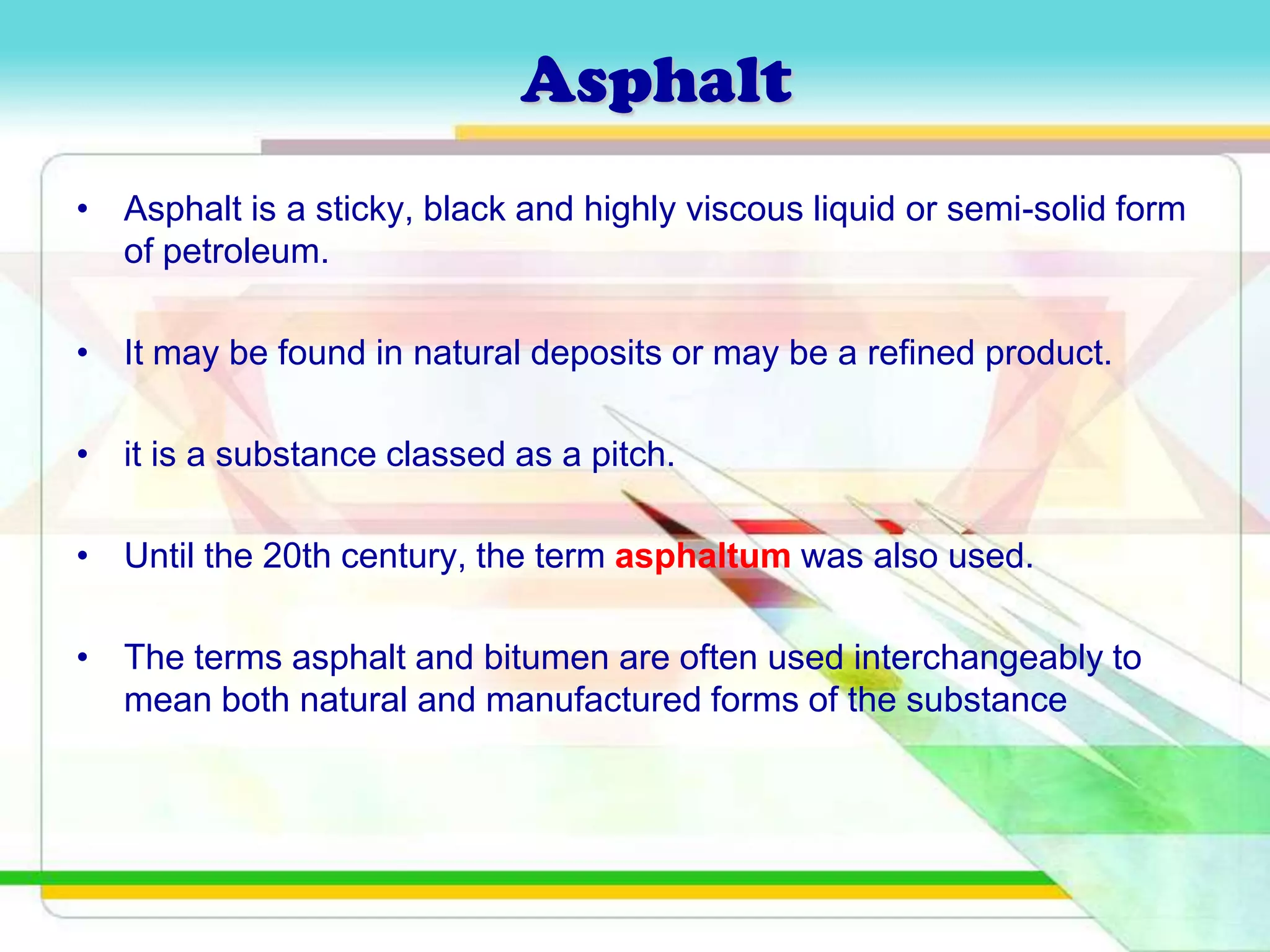Asphalt is a highly viscous liquid or semi-solid form of petroleum that can be found in natural deposits or produced from refined crude oil. It is primarily used as a binder mixed with aggregate in asphalt concrete for road surfaces, as well as for roofing materials and other waterproofing applications. Asphalt is composed mainly of condensed polycyclic aromatic hydrocarbons and has a complex chemical composition. Historically, it formed from the remains of ancient organisms buried deep underground and exposed to heat and pressure over long periods of time. Modern uses also include asphalt emulsion binders and alternatives produced from non-petroleum sources like plant starches.
























